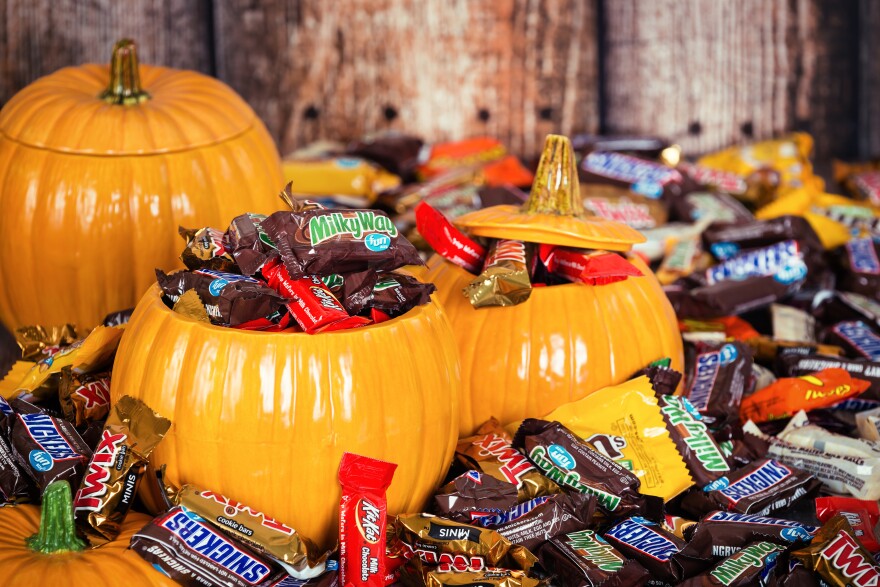With our free press under threat and federal funding for public media gone, your support matters more than ever. Help keep the LAist newsroom strong, become a monthly member or increase your support today.
The Cost Of Candy Is Up A Scary 13% Just In Time For Halloween

Halloween candy is getting a little scarier this year — about 13% scarier.
Those who prefer treat over trick will be paying 13.1% more than last year, according to the most recent inflation report from the Bureau of Labor Statistics.
It's the largest yearly jump in candy prices the CPI has ever recorded. (For comparison, it took nine years — from 1997 to 2006 — for candy prices to rise 13%.)
And the price of candy (along with chewing gum, which is in the same category) has risen 2% since August, one of the largest monthly increases of any food in the report.
Sweets of all kinds are costlier than last year, driven by major increases in the prices of sugar and flour. Sugar is up over 17% since last September. Supply chain disruptions and a poor beet sugar production year have all helped contribute. Flour prices have risen even more at 24%.
That's helped drive up the costs of cakes, cupcakes and cookies by 16% since last September. Frozen and refrigerated baked goods are up more than 20%.
Americans collectively are expected to spend about $3.1 billion on candy this season, according to the National Retail Federation, an industry trade group.
On a $15 bag of assorted Halloween-sized candies, a 13% increase comes out to about $2.
Costumes, too, may feel more expensive than usual.
While the CPI report does not specifically track costumes, the price of clothing has jumped 5.5% since last year. Those crafty enough to make handmade costumes will feel the pinch even more: Sewing machines, fabric and supplies are up 11% since last September.
Inflation overall has remained stubbornly high. Prices rose 8.2% for the 12 months ending in September, down slightly from last month but still much higher than the Federal Reserve's target of 2%.
-
Copyright 2024 NPR. To see more, visit npr.org.
At LAist, we believe in journalism without censorship and the right of a free press to speak truth to those in power. Our hard-hitting watchdog reporting on local government, climate, and the ongoing housing and homelessness crisis is trustworthy, independent and freely accessible to everyone thanks to the support of readers like you.
But the game has changed: Congress voted to eliminate funding for public media across the country. Here at LAist that means a loss of $1.7 million in our budget every year. We want to assure you that despite growing threats to free press and free speech, LAist will remain a voice you know and trust. Speaking frankly, the amount of reader support we receive will help determine how strong of a newsroom we are going forward to cover the important news in our community.
We’re asking you to stand up for independent reporting that will not be silenced. With more individuals like you supporting this public service, we can continue to provide essential coverage for Southern Californians that you can’t find anywhere else. Become a monthly member today to help sustain this mission.
Thank you for your generous support and belief in the value of independent news.

-
Tens of thousands of workers across Southern California walk out over pay and staffing issues.
-
People in and around recent burn scars should be alert to the risk of debris flows. Typical October weather will be back later this week.
-
Jet Propulsion Laboratory leadership says the cuts amount to 11% of the workforce.
-
The rock legend joins LAist for a lookback on his career — and the next chapter of his music.
-
Yes, it's controversial, but let me explain.
-
What do stairs have to do with California’s housing crisis? More than you might think, says this Culver City councilmember.







